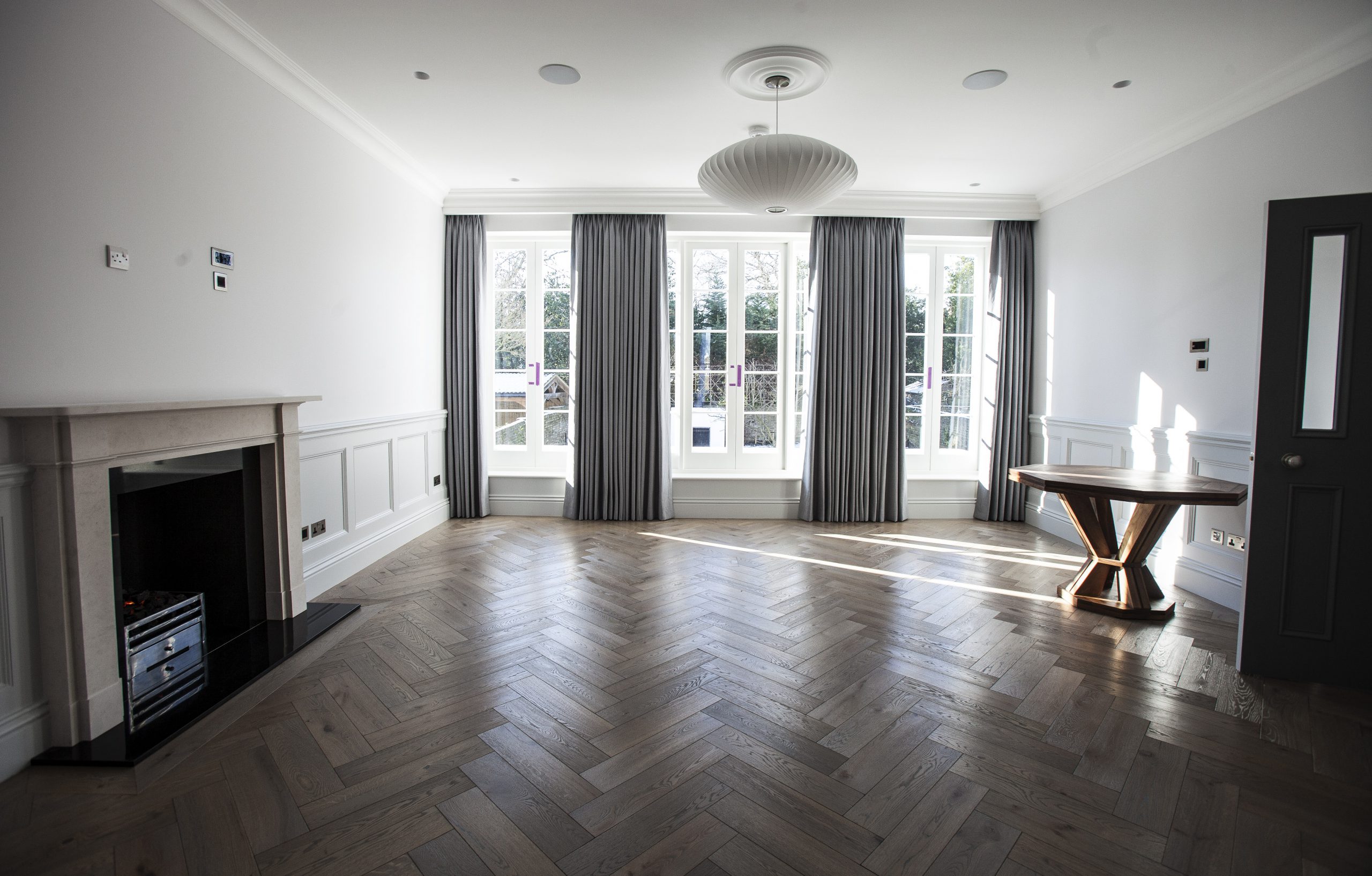Carpentry is an important skill

The carpenter takes on a broad range of jobs on a building project. The first and last person on site, the carpenter secures it with locks and hoarding, and removes them on completion. Between these stages, they fit windows, flooring and decking, and construct cabinets, panelling and kitchens. That’s why carpentry is an important skill in our projects.
The workforce on a build project fits into three categories: carpentry, trowel trades (stone masons, bricklayers, plasterers) and M&E (mechanical and electrical – plumbing, heating, lighting, AV, etc). Over the decades, these trades have spawned specialisms in response to the availability of different materials and advancement of technology. Carpentry is no different, hence ‘wood occupations’, the collective term used by the CITB.
The fact that Galower has 10-15 permanent carpenters in our employ, should give you some idea of the significance of their input on our building projects. Read on for more of an insight into how we define carpentry skills.
Joinery vs carpentry: what’s the difference?
‘Joinery’ and ‘carpentry’ are used interchangeably, with different regions of the country preferring one over the other. Generally, however, ‘joinery’ concerns the making of a piece (eg a wooden staircase); the cutting and fitting of joints without screws, nails or metal fasteners. ‘Carpentry’ is the installation part, fitting all the pieces together which, generally, calls for a smaller, more portable toolkit.
We use the term ‘carpenter’ to cover both skills.

Carpentry interprets then creates the architect’s vision
Every build has an overall theme which is reflected in the detail: the stone and woodwork, use of glass and type of decoration. Sometimes we are creating completely new buildings, other times the brief is to renovate and replicate. Always we ‘read’ the style, particularly if we are reflecting an era – art deco, for example, has its own very specific set of rules.
As crafts people, we have to be sensitive to these rules so we research and immerse ourselves – the flooring or panelling featured in a top London hotel, for example. When our carpenters build an AV cabinet it has to be functional, as well as reflect a particular style. They lay flooring to a pattern, a random one so it doesn’t look regimented.
Reclaimed materials can be very expensive so we’re very skilled at matching original materials and techniques. French distressed wood flooring, for example, is expensive – naturally – so we encourage our clients to use it in their principle rooms, then we’ll match it elsewhere, as required.
Essentially, it’s the building that will tell you want it needs, so that’s what we react to.

Measure twice, cut once
Accurate measurement and superb craftsmanship in carpentry really influences how a design fulfils its intended purpose, both aesthetically and functionally. Experience and the skilled use of tools are vital but so too is an eye for detail. From checking that a door is shutting on a hinge fully, to installing wooden mantels and ornamental casings, a carpenter is working with complex designs and calculations.
Measuring, cutting, shaping, and joining – these are key carpentry skills that must be completed with meticulous attention.

The carpenter’s toolbox
Back in the day, new apprentices had to make their own toolboxes and tool chests. These wooden boxes were not just for storage. They helped to create a ‘micro-climate’ to protect the craftsman’s tools from the damp. They also doubled up as a work surface, and somewhere to sit during a tea break.
The boxes were often painted black (hence their other name of ‘piano boxes’?) and waxed to create an ebonised finish making them even more moisture-resistant. You can find some very elaborate ones, featuring inlaid marquetry, and clearly made by apprentice cabinet-makers. Today, the range of bags, boxes and belts enables carpenters to be as portable as they wish and, thanks to modern tools, so much of their work can be done on site instead of the workshop.
Here’s the basic list of what we use on a daily basis – note how many are ‘traditional’:
The carpenter’s pencil
We still use them to mark out lines on every sort of material or grain. These pencils differ from regular ones, in their shape (flat so they don’t roll away) and the type of lead (thicker and harder for working with rough materials such as timber). Still often to be found behind the carpenter’s ear.
Chalk line
We continue to mark out long, straight lines just like the Egyptians did. Now though, we have a few more options to make this faster and easier. (Still using chalk albeit in compound form.)
Chisel
Still the best way of cutting and carving into hard wood. Takes great skill, driving these sharp-bladed chisels into wood by hitting the handle with a mallet or hammer.
Saw
There are a lot of saws out there, and it’s all about the teeth. The list for carpentry alone is long – hacksaws, coping, jab, scabbard, mitre. We use hand saws and high powered cordless ones.
Hammer
One of the most basic but fundamental tools and again, the choice is wide: claw, sledge, club, ball peen…
Mallet
We use rubber mallets for delivering soft blows (on wood!) or applying pressure on surfaces without causing damage.
Levels
Traditionally, this is a central vial filled with liquid (hence the name ‘spirit’ level) and an air bubble to indicate the angle. Still widely used, alongside digital versions.
Tape measure
Generally, our tape measures are made of metal. We always have one to hand, and the scraping sound as it shoots in and out, is often the stand-out noise on a building site. We also use laser measures for speed and convenience combined with accuracy.
Carpentry skills are integral to a successful build
All our trades people contribute to the ultimate success of a building project. Carpenters, having an eye for design and detail, are integral to the whole process of an architect’s ‘vision’ coming to life.
